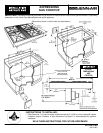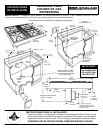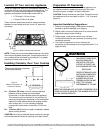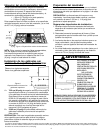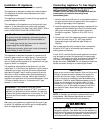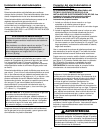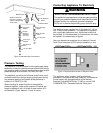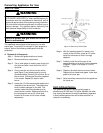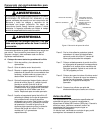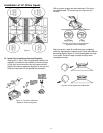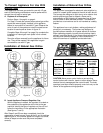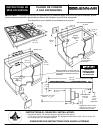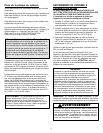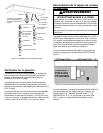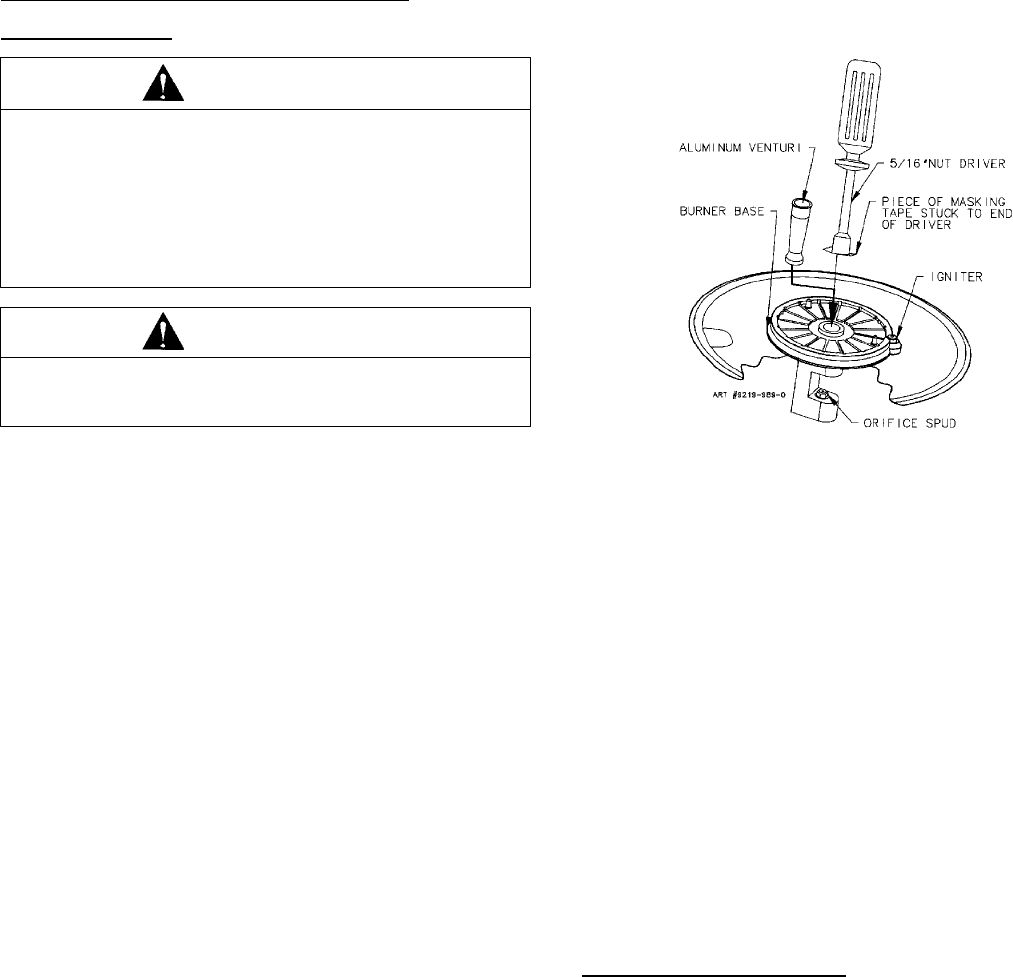
5
Converting Appliance For Use
With LP
Gas
Propane conversion is to be performed by a JENN-AIR
AUTHORIZED SERVICER (or other qualified agency) in
accordance with the manufacturer’s instructions and all
codes and requirements of the authority having jurisdiction.
Failure to follow instructions could result in serious injury or
property damage. The qualified agency performing this
work assumes responsibility for this conversion.
WARNING
Electrical power an d gas must be turned off
prior to conversion.
WARNING
This appliance was adjus ted a t the factory for use with
natural gas. To convert it for use with LP gas (propane or
butane), both of the following modifications must be
performed:
A. Replace all orifice spuds
Step 1: Rem ove the grates and burner heads .
Step 2: Rem ove aluminum venturi tube.
Step 3: Trim a small piece of masking tape to the size
of a dime and affix it over the end of a 5/16²
nut driver.
Step 4: Firmly press the nut dr iver over the orifice
spud (figure 5) and loosen spud by turning
counterclockwise. Carefully lift nut driver out of
burner throat. Orifice spud should be captured
in the r ecess. Repeat this step for each
burner.
Step 5: Loc ate the LP orifice spud pac ket taped to the
underside of the burner box. The s puds have
small numbers stamped on the side. This
number codes the orifice diameter and its
correct burner location. Reference figure 6 on
the next page for c orrect LP orifice spud
location for 4 burner and 5 burner models,
respectively.
Figure 5: Removal of Orifice Spud
Step 6: With the masking tape still in place i n the
recess of the nut driver, press an LP orifice
spud into the r ecess so that it is snugly
captured.
Step 7: Carefully install the orifice spud in the
appropriate burner throat by turning clockwise
to tighten. Tighten to a torque of 15 to 20
inch-lbs.
Step 8: Replac e cylindrical aluminum venturi tubes.
Replace burner heads and grates. Index each
grate to its burner pan.
Step 9: Save the o rifices removed from the appliance
for future use.
High Altitude Notice
The specified gas burner ratings typically apply to
elevations up to 2000 feet. For higher altitudes, the rates
may need to be reduced to achieve satisfactory operation.
A local certified gas servicer will be able to advise if a
reduction is nec essary.



